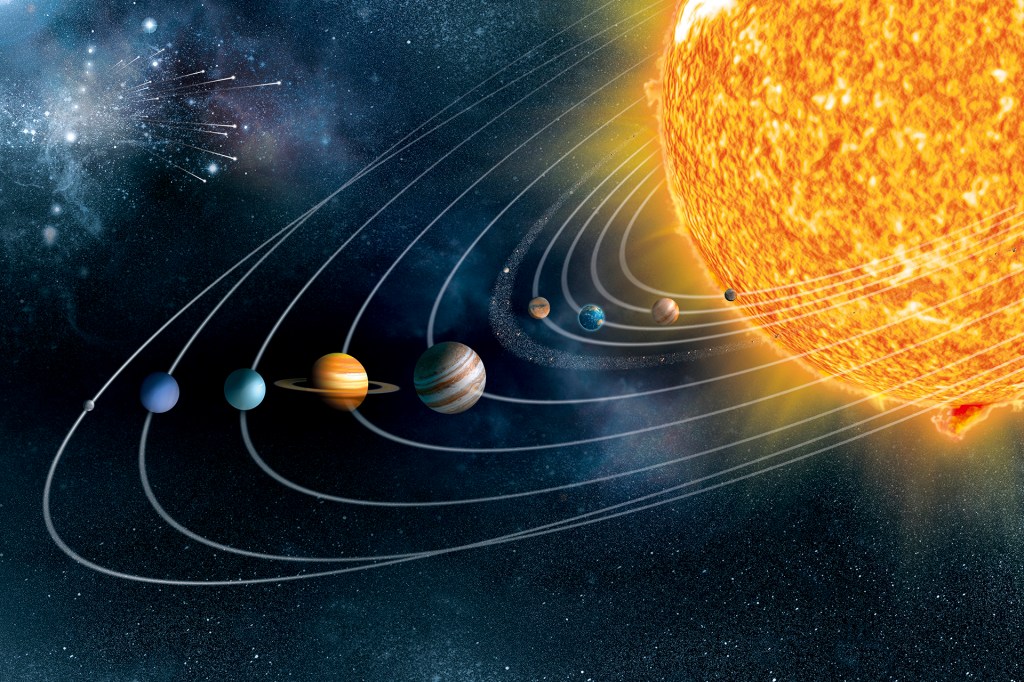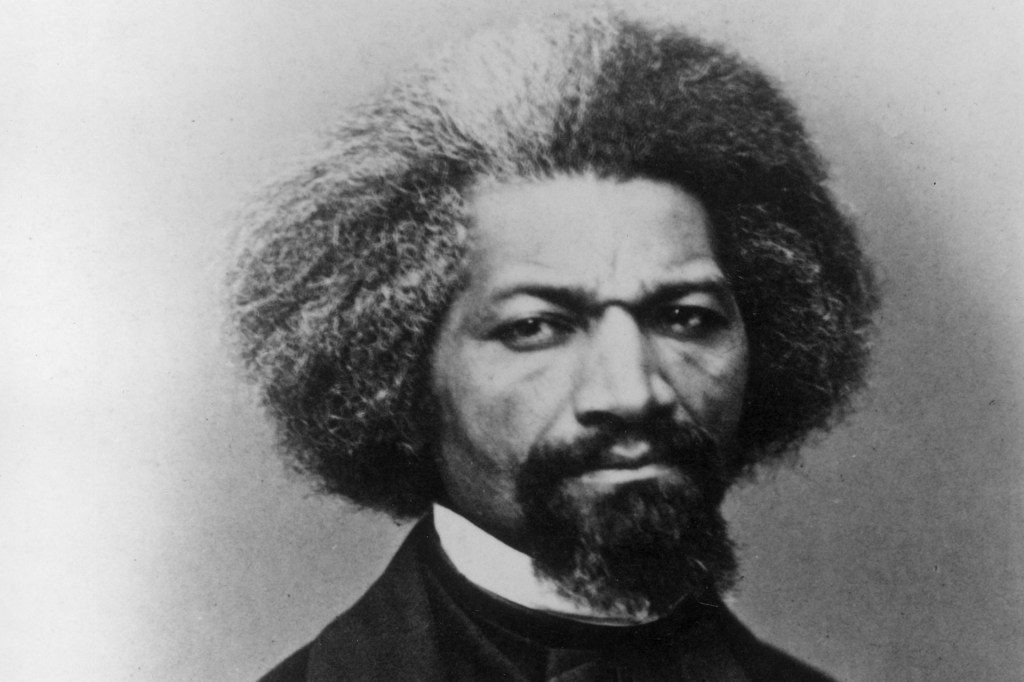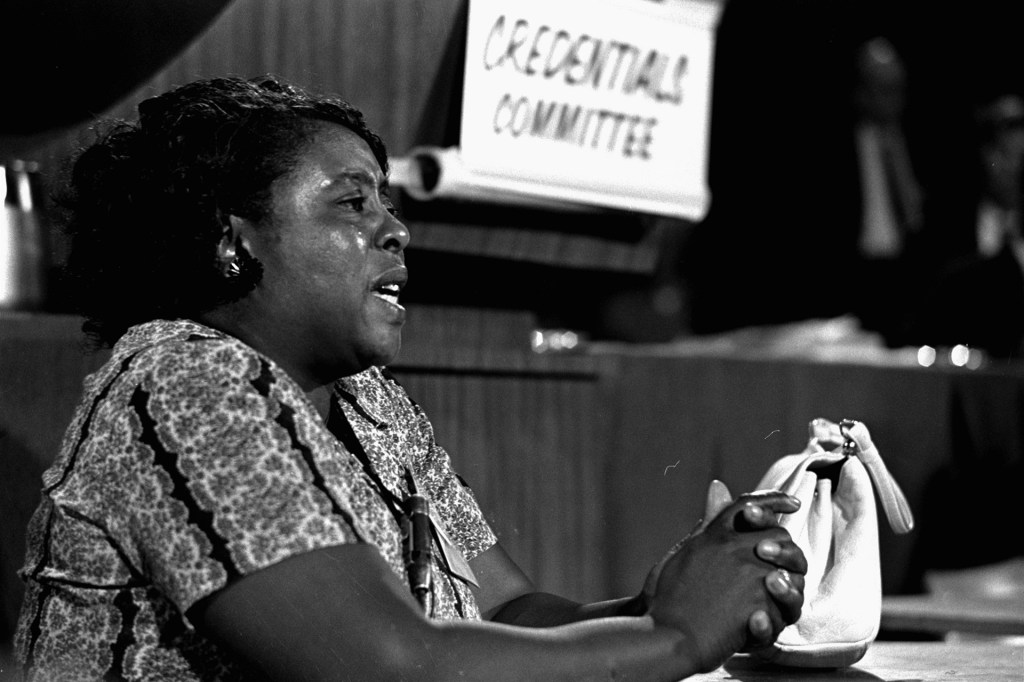What Are Volcanoes?
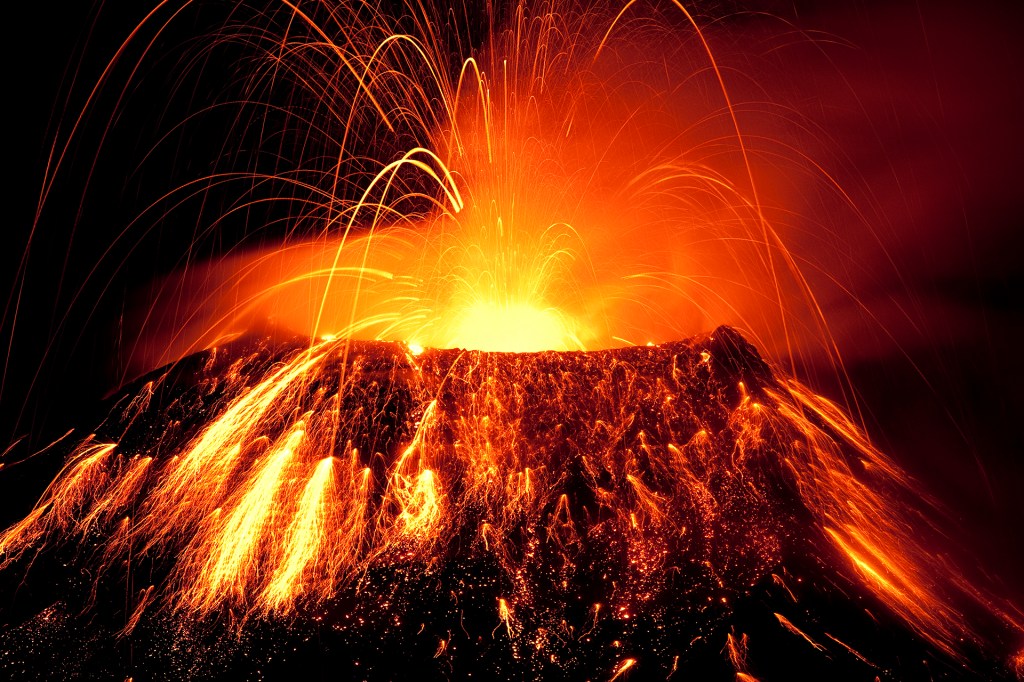
Take a bottle of soda. Shake it really hard. Gas bubbles will form inside, causing a buildup of pressure. Twist the cap off. Pressure will release from the bottle. Soda will shoot everywhere.
A volcanic eruption works much the same way. Pressure builds up inside a volcano as gas bubbles form in magma. Magma is hot liquid rock beneath the surface of the Earth. Gas bubbles in the volcano need to escape. So the volcano erupts. Boom!
A volcano is a mountain or hill with an opening. When a volcano erupts, magma is pushed up through the opening with great force. When magma reaches the Earth’s surface, it is called lava. Lava can be as hot as 2,200°F (1,204°C).
Some volcanic eruptions are explosive. Lava shoots into the sky. Gas and hot pieces of rock and ash are also released. Other eruptions are effusive
effusive
 LEOPATRIZI/GETTY IMAGES
overflowing
(adjective)
My effusive friend is enthusiastic about everything she does.
. Lava oozes slowly from the volcano.
LEOPATRIZI/GETTY IMAGES
overflowing
(adjective)
My effusive friend is enthusiastic about everything she does.
. Lava oozes slowly from the volcano.
The intensity of an eruption depends on a few factors. One is the magma’s temperature. Another is the magma’s thickness. The amount of gas trapped within the magma is also an important factor.
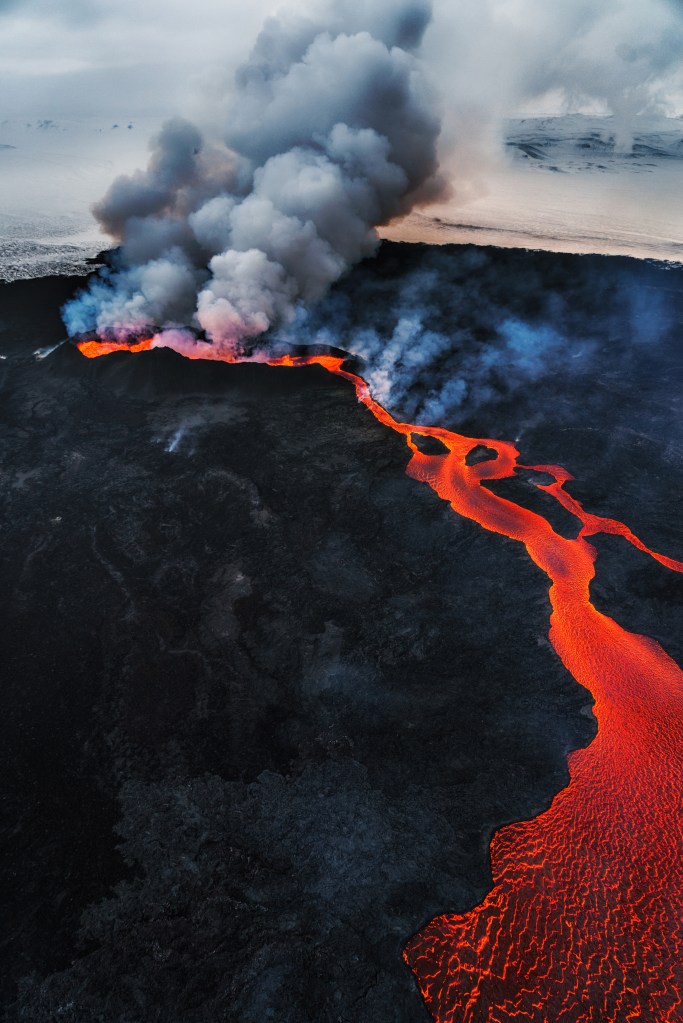
Mount Saint Helens, one of the most destructive volcanic eruptions in U.S. history, is located along the Ring of Fire.
GETTY IMAGESThe Ring of Fire
About 75% of the Earth’s volcanoes are located in a region called the Ring of Fire. This 25,000-mile “ring’ is located around the Pacific Ocean. It runs from the southern tip of South America and up the west coast of North America. It continues across the Bering Strait and then south through Japan to New Zealand.
The ring sits along the outline of several tectonic plates. Tectonic plates are the large puzzle pieces that make up the Earth’s crust. The crust is Earth’s outer layer. Most volcanoes form at the edges of tectonic plates. These huge plates are constantly shifting. Sometimes, the plates pull apart or slide into each other. When this happens, magma rises to fill in the space. Strong pressure and intense heat force the magma upward. It squeezes upward like toothpaste through a tube.
Heating Up
Volcanoes can be dangerous—especially to the millions of people around the world who live near one. When a volcano erupts, lava, hot ash, steam, and rocks are released. In addition, volcanic eruptions can cause other natural disasters. These include landslides, mudslides, earthquakes, and tsunamis.
The most destructive volcanic event in U.S. history occurred in 1980. That is when Mount Saint Helens, in Washington State, erupted. The eruption destroyed entire forests. It killed 57 people. Mount Saint Helens is located within the Ring of Fire. It is a composite volcano, or stratovolcano. This is the most common type of volcano. It is tall and cone-shaped. A composite volcano is made up of layers of rock and ash. Its eruptions are often violent.
Another historically important volcanic event occurred in 79 A.D. in Italy. That is when Mount Vesuvius erupted. It buried the city of Pompeii in lava and ash. The city and its people were lost. Centuries later, scientists discovered their remains.
Volcanoes can be destructive. But they can also create new land. The Hawaiian Islands were created by the eruptions of shield volcanoes. These large, low-lying volcanoes are made up almost entirely of layers of hardened lava.
Another type of volcano is the cinder cone. These shoot lava into the air like a sputtering fountain. A cinder cone eruption often comes from a single volcanic vent in the Earth’s crust. Lava cools quickly in the air. It hardens into glassy rocks around the volcano’s opening. One example of a cinder cone volcano is Sunset Crater, in Arizona.
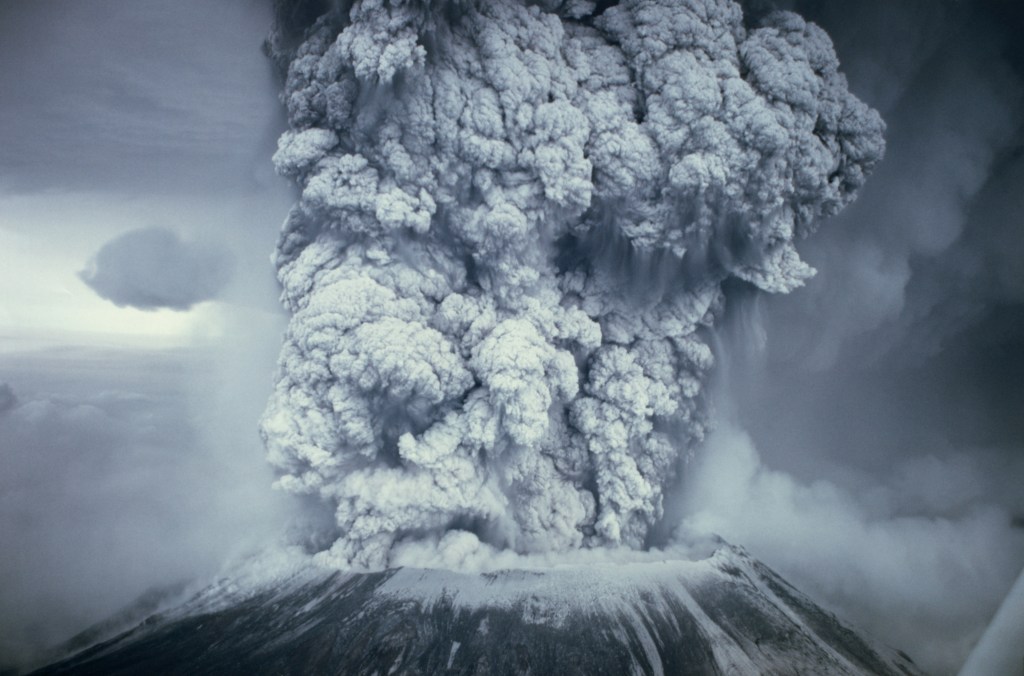
The Bardarbunga volcano, located under one of Iceland’s largest glaciers, spews a massive cloud of smoke and debris.
ARCTIC-IMAGES/GETTY IMAGESA Powerful Force
Volcanoes have played an important role in shaping our Earth. Ash from volcanoes adds helpful minerals to soil. This helps plants grow strong. Healthy plants produce oxygen for humans and animals to breathe. Volcanoes also remove heat from the Earth’s interior. This helps keep our planet cool.
In recent years, a new benefit of volcanoes has surfaced. Scientists are turning to volcanoes to help power cities. Researchers are exploring geothermal energy. It involves tapping into the heat beneath the Earth’s surface to generate electricity. In Iceland, 25% of the nation’s energy is geothermal.
Volcanoes may be unpredictable. But as we learn more about how they work, they will become even more important to life on Earth.





